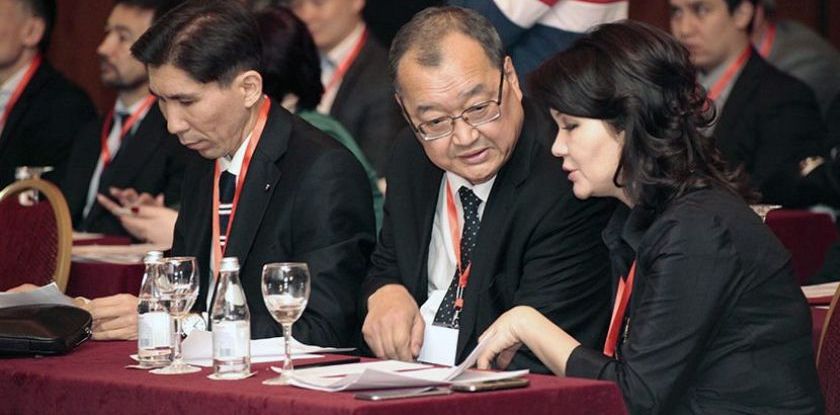Akorda’s decision to allocate 2.1 trillion tenges for the revitalization of the bank system has caused a heated discussion in the country. The reaction of the international credit rating agencies, however, has been quite positive.
On February 16, 2017, three days after the decision was announced, Fitch Ratings said in its press release, “Kazakhstan’s statements and actions are a sign of the progress made by the country in solving the problems of its bank sector”. They also point out that “the quality of the assets may drastically improve as a result of the state’s decision to allocate 2 trillion tenges for buying the banks’ stressed credits via the Central Bank’s problem loan fund”.
However, we still do not know which banks the state is going to save. Also, it is still not clear how exactly this operation will be carried out. The expert community is left in the dark and has to make educated guesses. Nonetheless, the publicly known facts allow to make these predictions to a high precision.
Here is a list of these facts.
- Halyk Bank (the second largest commercial bank in RK) and Kazlommertsbank (Kazkom) had signed a non-binding contract according to which Halyk Bank would buy the majority stake of Kazkom. Kenes Rakishev, the chairman and the controlling shareholder of Kazkom, was named as the seller.
- The total sum allocated by the state budget for the bank system revitalization in 2017 amounts to 2.094 trillion tenges. The sum includes the 1.093 tenges allocated from the National Fund of Kazakhstan by a special presidential order.
- Halyk Bank belongs to Nazarbayev’s second daughter Dinara Kulibayeva and her husband Timur Kulibayev who is also acting as the chairman of the National Chamber of Entrepreneurs.
- According to the official Kazkom release of June 22, 2015, its board of directors had made a decision to accommodate BTA Bank with a credit of 630 billion tenges and 5.6 billion USD.
- In its official financial report, Kazkom states that, as of September 30, 2016, the size of the loans, before the provisions made for the key managerial personnel, had amounted to 2.504 trillion tenges.
Based on these facts, we may assume the following.
- The decision to sell the Kazkom majority stake to Halyk Bank has been made by Nazarbayev himself and is of a purely political nature.
- Nazarbayev’s decision has several aims:
а) to provide the final solution to the Kazkom problem (bearing in mind that this systematically important bank takes up a quarter of Kazakhstan’s financial market);
б) to provide a solution to the bank sector superabundance problem (given the state of the effective demand in Kazakhstan, the country does not need such an big financial sector);
в) to strengthen the positions of Halyk Bank via eliminating its major competitor and obtaining a part of the competitor’s client base;
г) to stabilize the bank sector via increasing average profits;
д) to weaken the positions of Kenes Rakishev and his father-in-law Imangali Tasmagambetov.
- The Kazkom’s liquidity problems at the end of 2016 were probably induced by the large withdrawals from the state and quasi-state agencies’ accounts for the purpose of forcing Kazkom to sign the contract.
- The structure of the transaction will probably be as follows:
а) the problem loan fund buys either the BTA Bank credit granted by Kazkom or the BTA Bank’s clients’ debts and assets. The first seems more feasible because it will simplify the transaction and decrease dramatically the time of its completion. The second will provide the means of auditing the debts and the assets which may be important for their future monetization.
б) Upon receiving the funds, Kazkom pays its debts owed to the National Bank of Kazakhstan, the government, and the state/quasi-state agencies.
в) Then, Kenes Rakishev sells the controlling stake (or its largest part) to the National Bank of Kazakhstan. The NBK, thus, becomes Kazkom’s parent company.
г) Halyk Bank decides to merge with KazKom. While executing this project, they optimize Kazkom’s branch network, consolidate its core and secondary businesses which, in fact, would mean Kazkom’s elimination with its office closures, personnel and expenditure decreases.
The problem is that the quality of the BTA Bank credit is extremely questionable. By our estimate, the probability of its recovery equals 5-10%. This estimate is based on the Russian practice that is much more large-scaled and transparent than the Kazakh one.
Of course, we doubt that, in this case, they will consider the economic factors in determining the price of the transaction (including the actual market price of the Kazkom shares). Indeed, if they purchase the BTA Credit with the 90% discount, Kazkom loses its capital entirely (460 billion tenges as of December 1, 2016) and is worth nothing.
Therefore, the conflict of interests between Halyk Bank and Kazkom (in other words between Dinara and Timur Kulibayevs and Kenes Rakishev) in determining the discount of the BTA Bank credit purchase is inevitable. It will also determine the price of the BTA Bank shares and, thus, the amount of money Kenes Rakishev will return on his Kazkom investments.




